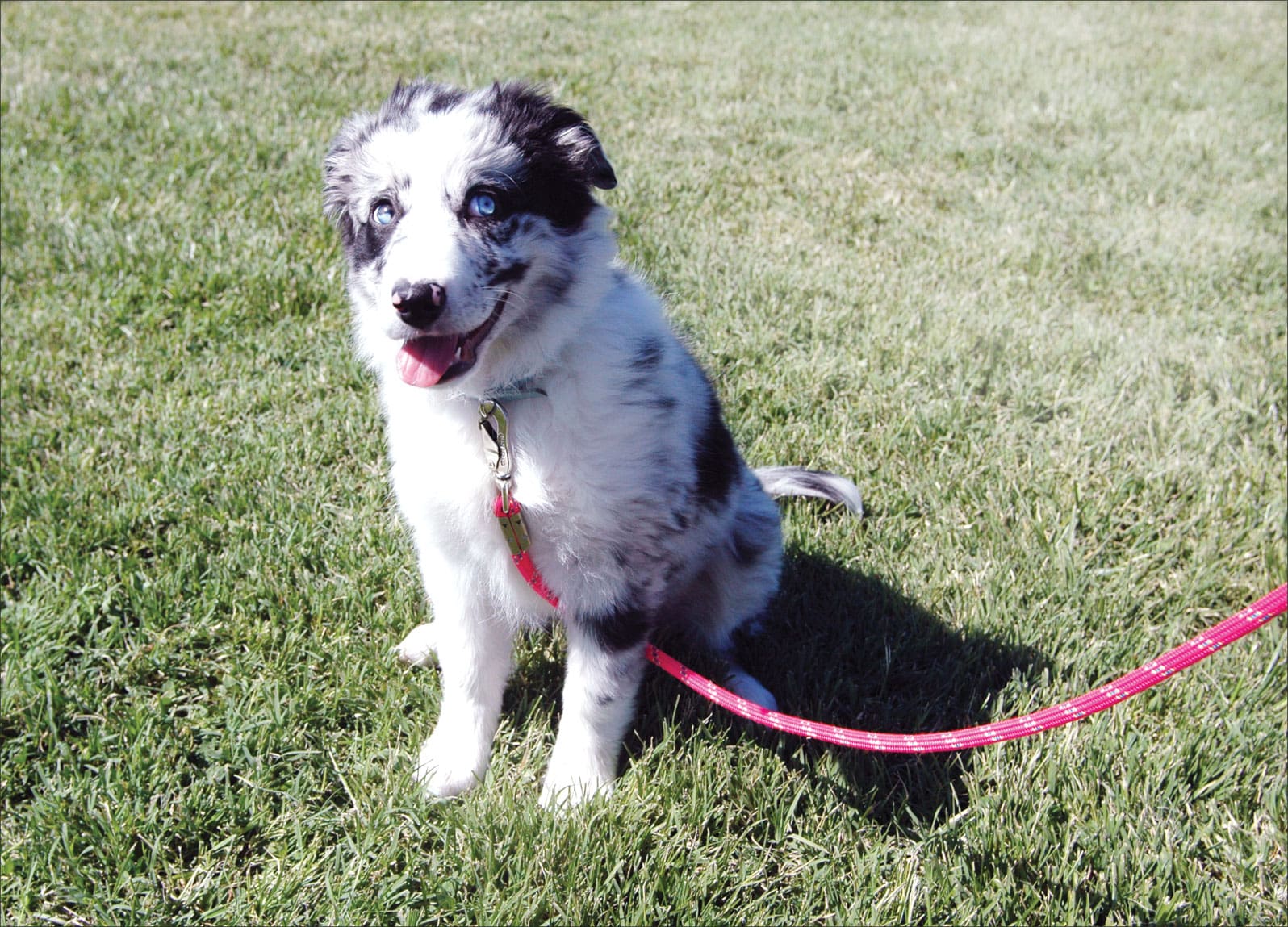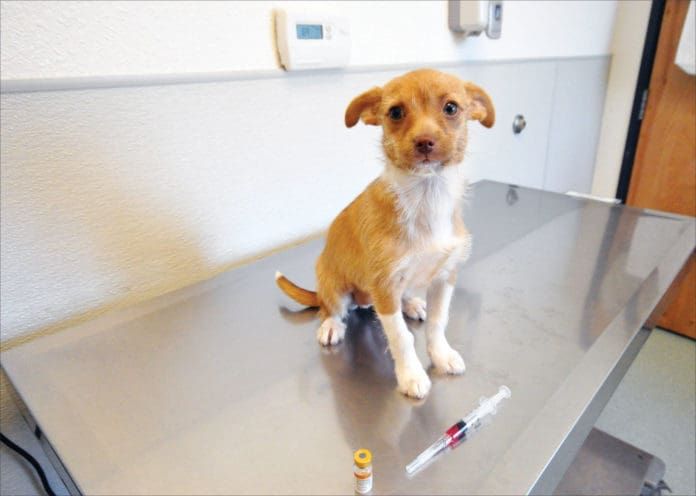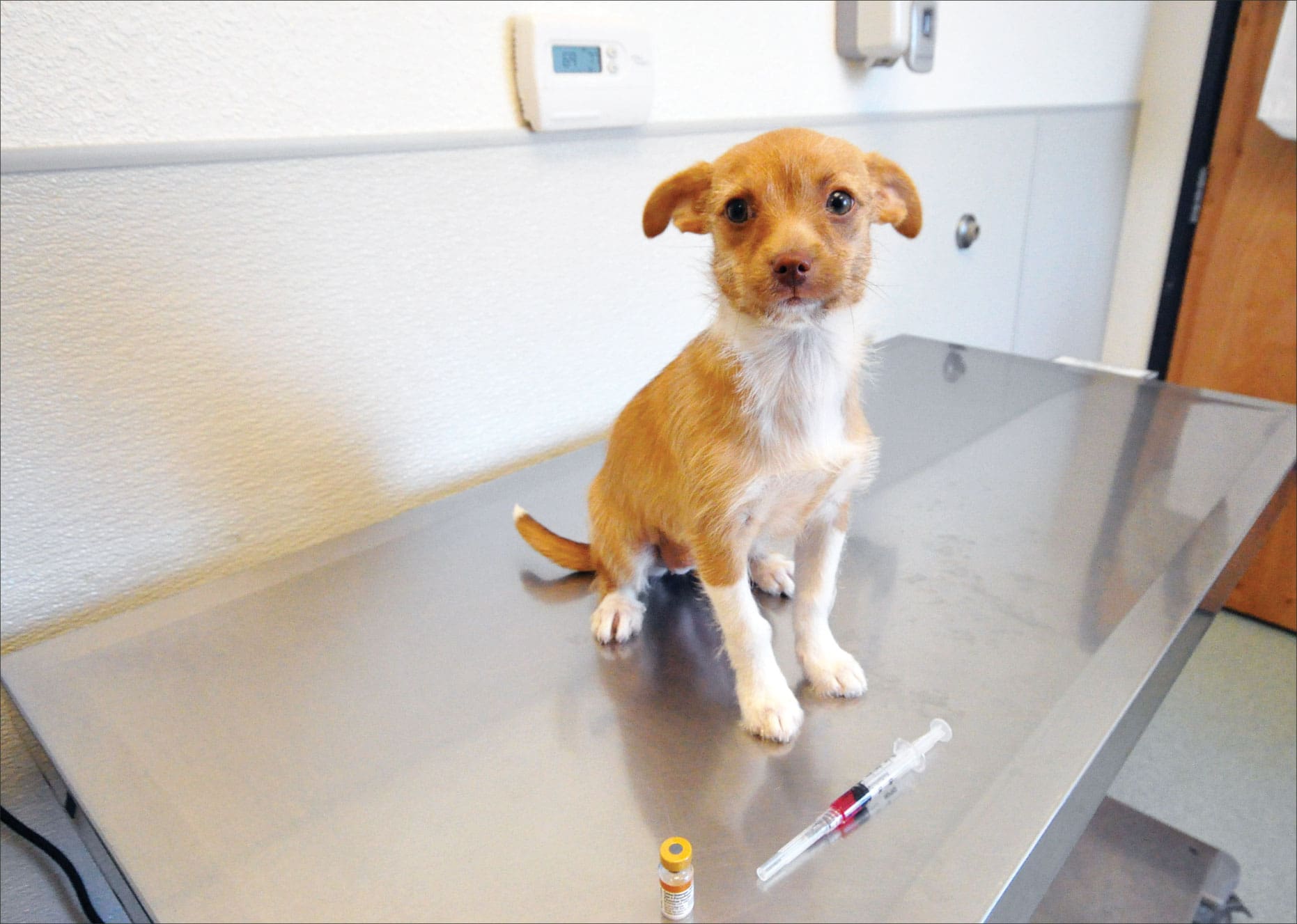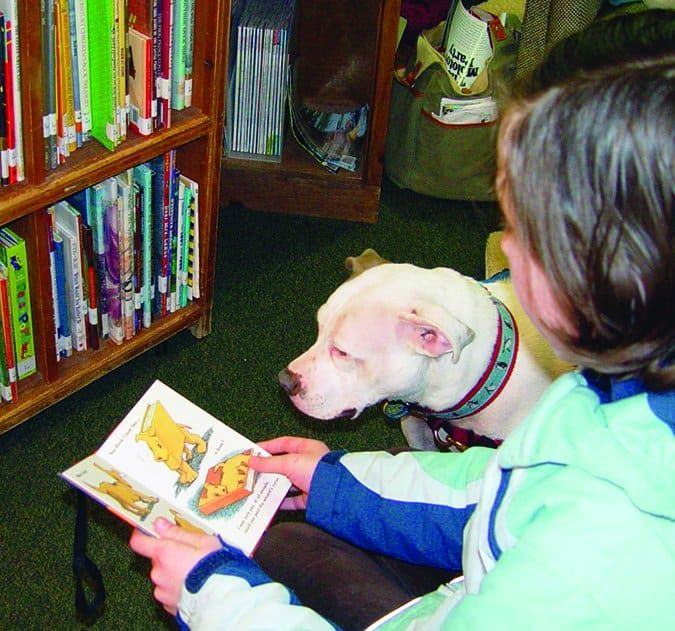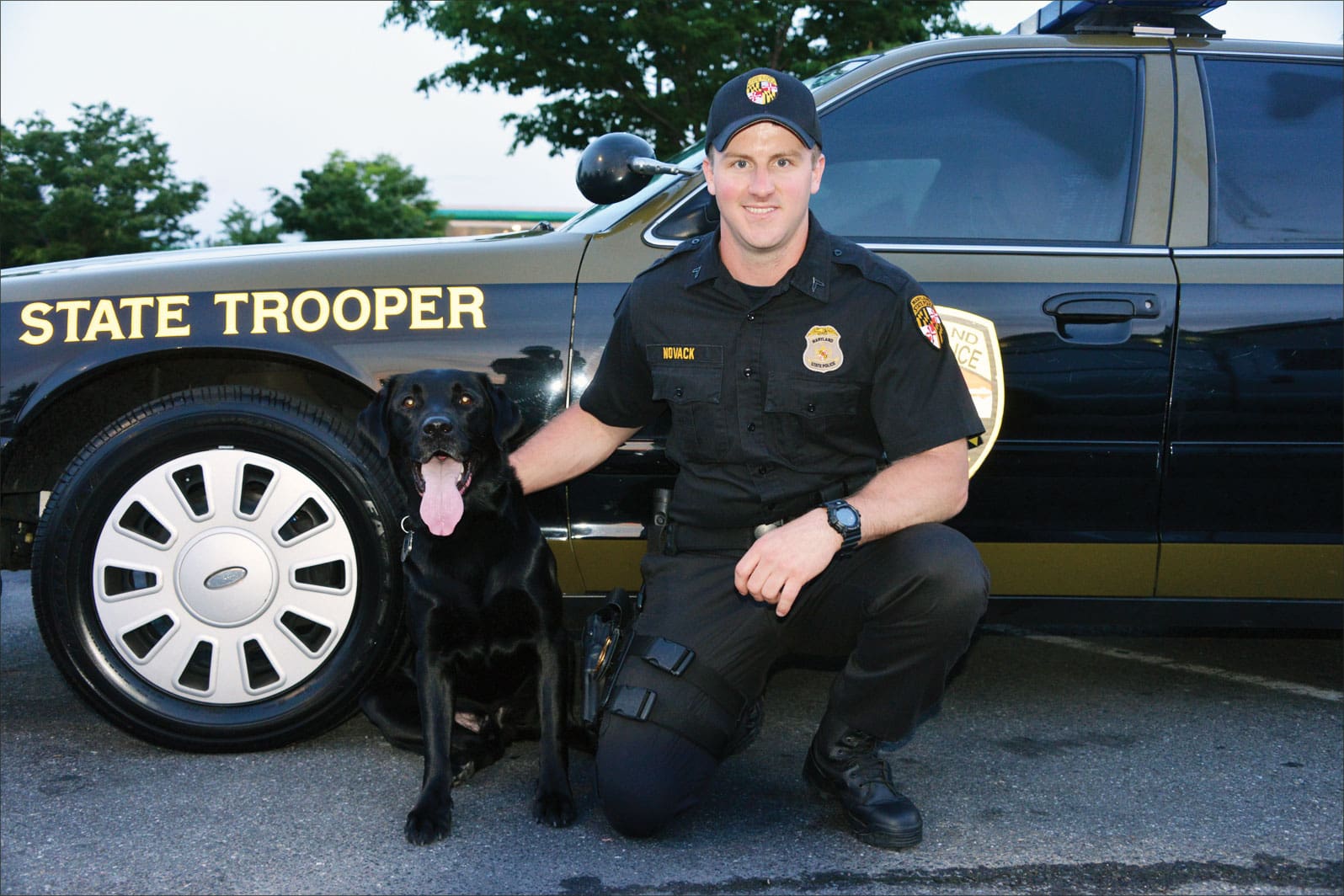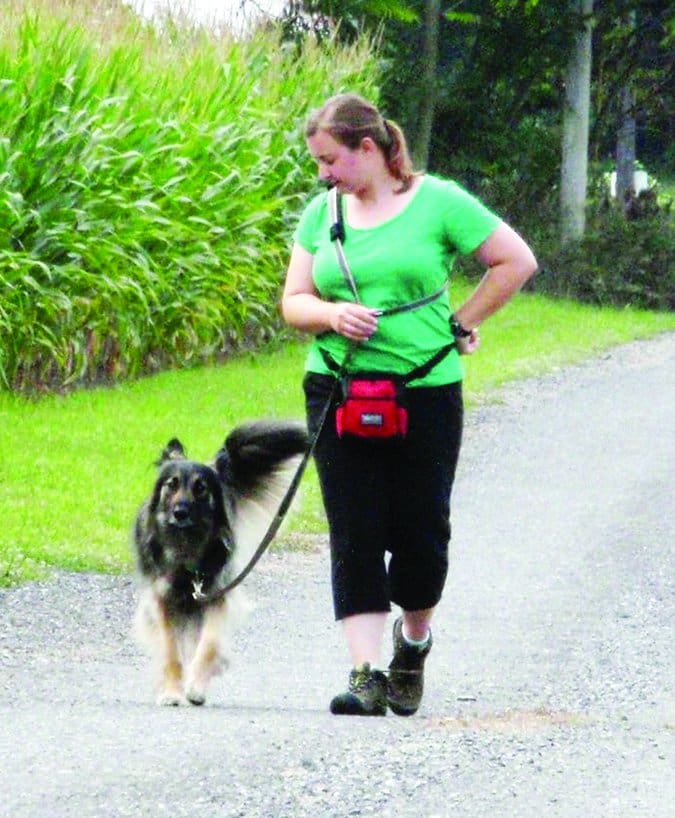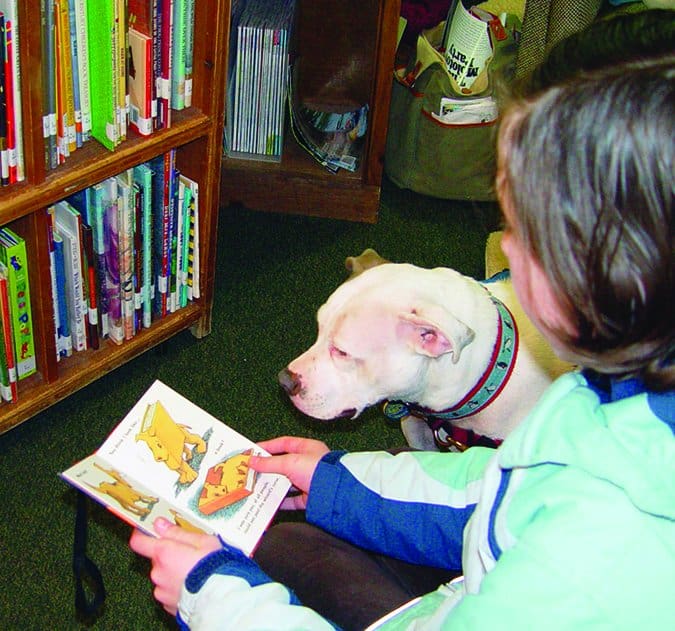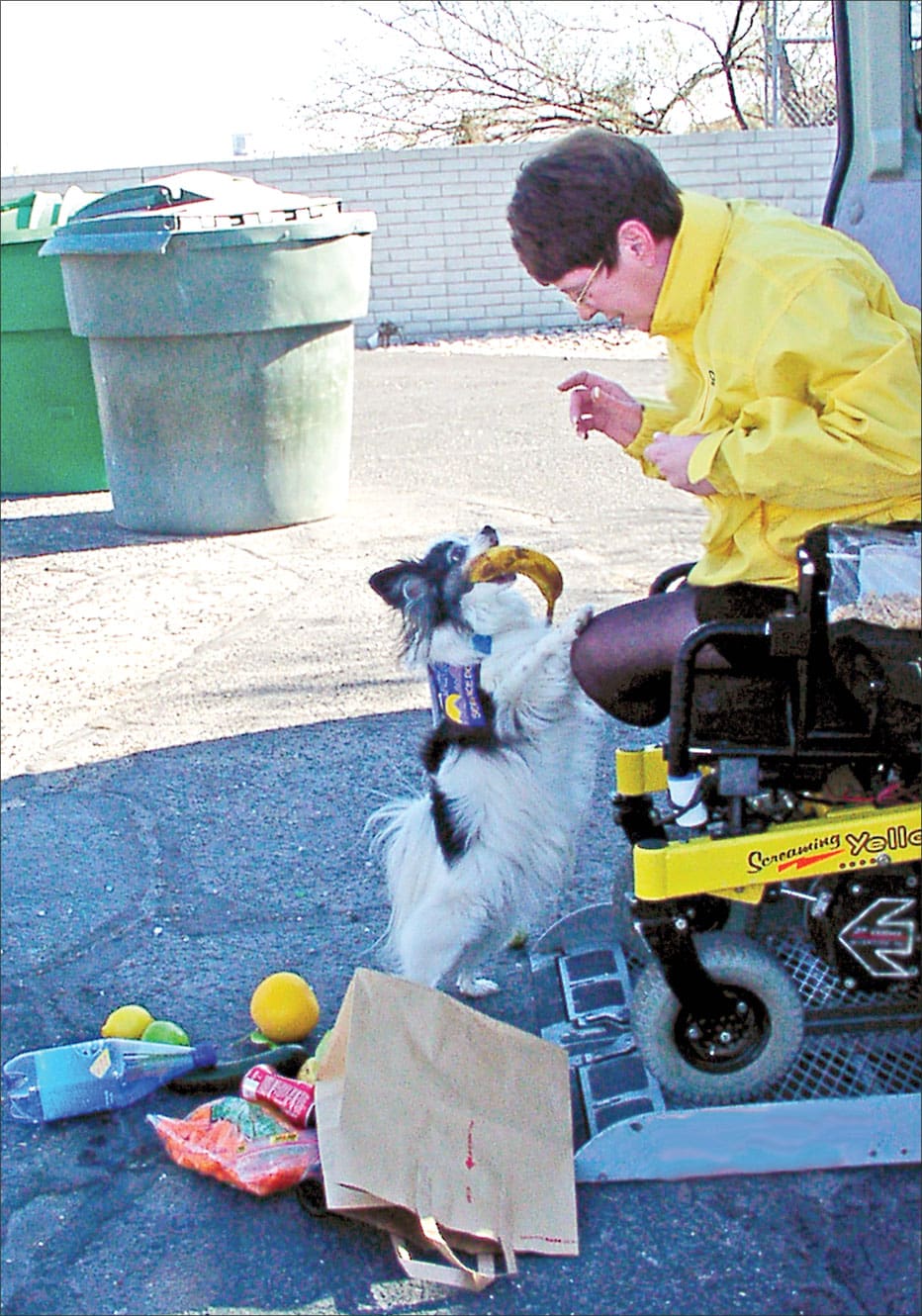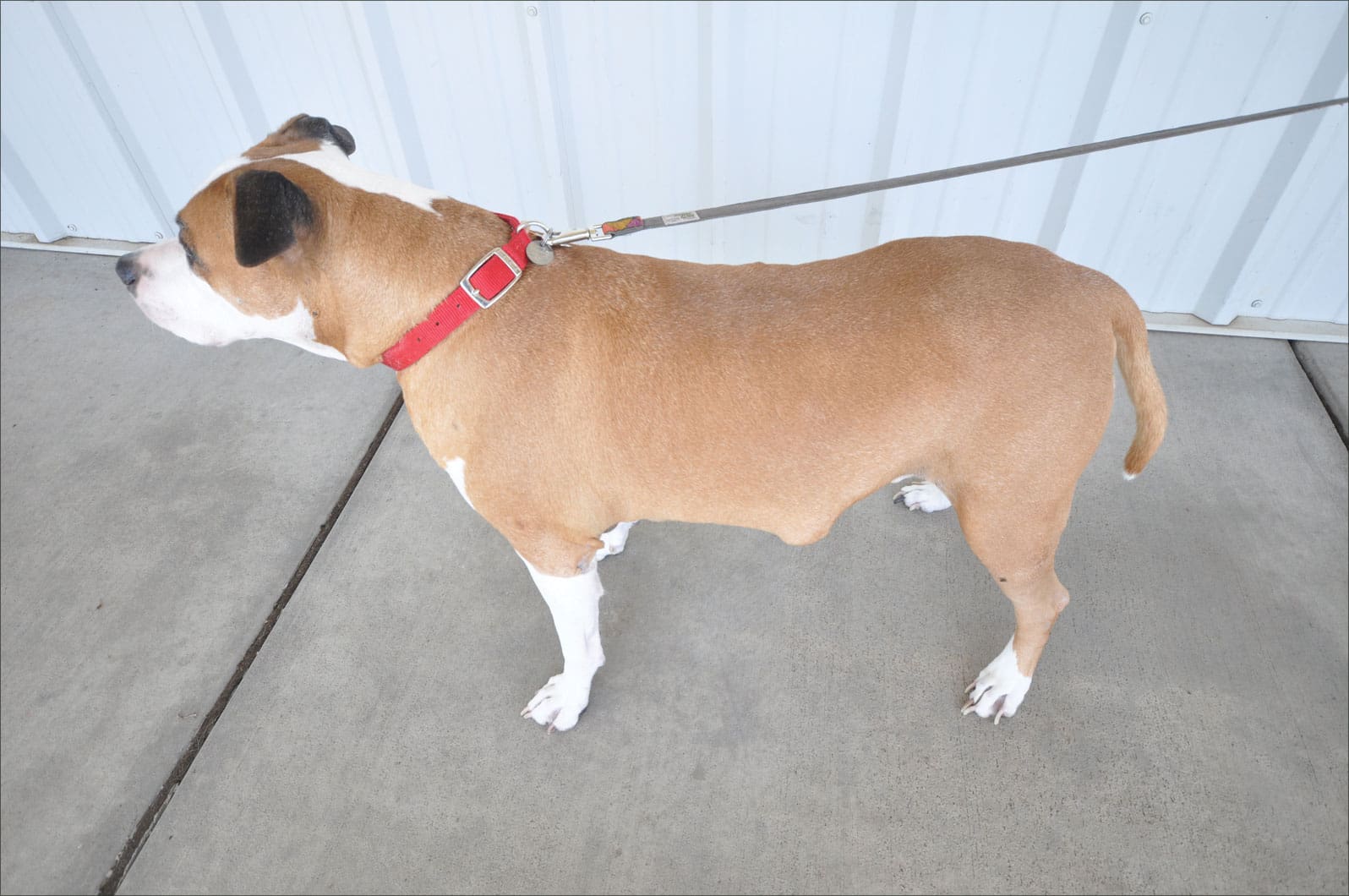Listen to Susan Paulsen’s story, and you’ll never look the same way again at your dog diving into your swimming pool or a glistening lake, or biting playfully at jets of water from your lawn sprinklers or garden hose.
Earlier this year, Susan was poolside at her home in Morgan Hill, California, tossing a ball for her water-loving Papillon, Kinetic. The 3½-year-old dog was a top-ranked agility competitor, with whom Susan planned to compete at elite agility events around the globe this year. Susan routinely cross-trained the little dog in the pool to build her muscle strength. Kinetic had just learned how to leap straight into the pool, and absolutely loved diving into the big blue expanse for her toy.
Susan was always careful to prevent Kinetic from overexertion; the dog’s name reflected her exuberant attitude about everything she did. So after the usual 20 minutes, Susan called a time-out for Kinetic to rest.
A half-hour later, Susan found her dog motionless on the couch. Kinetic was so lethargic and weak that her head bobbed and she urinated uncontrollably when Susan picked her up. In the car on the way to the emergency vet, things got worse: Kinetic started to foam at the mouth, her lips turned blue, and she passed out, lapsing into a coma from which she would never awaken. As the veterinarian did bloodwork, noting that her sodium-potassium levels were off, Kinetic slipped even further away. Her brain started to swell, and her organs began to fail. At 2 am, the veterinarians took Kinetic off the respirator.
In the space of six hours, Kinetic had gone from being an active, vibrant, butterfly-eared blur to a memory.
“She was fine,” Susan says, still in disbelief. “We didn’t do anything excessive, and she wasn’t exhausted. I had no clue that this could happen.”
The culprit was water intoxication, a relatively rare but frequently lethal condition that results from the body taking in more water than it can handle. When this happens, sodium levels outside the cells are depleted, a condition called hyponatremia. In an effort to rebalance itself, the body responds to the low blood sodium by increasing fluid intake inside the cells. Some organs, such as the liver, have room to accommodate the size of their swelling cells, but others – in particular the brain, which is encased in unyielding bone – cannot.
Signs of water intoxication include lethargy, bloating, vomiting, loss of coordination (stumbling, falling, staggering), restlessness, increased salivation, pale gums, dilated pupils, and glazed eyes. As the pressure in the brain increases and its cells begin to die off, the dog may have difficulty breathing, develop seizures, and lose consciousness.
How much water should a dog drink? Find out here.
Water Intoxication in Dogs is Frequently Misdiagnosed
“I think water intoxication is much more common than we think, and it’s often misdiagnosed,” says veterinarian Janet Dunn of Hollister, California, who owns some of Kinetic’s siblings and has made it her mission to find out just how much – or how little – veterinarians know about the syndrome that took Kinetic’s life.
Kinetic presented symptoms that were absolutely “classic” for cases of water intoxication, Dr. Dunn says, and yet, some of the first guesses at the veterinary emergency clinic about what was wrong with Kinetic included head trauma, hypothermia, and overexertion.
“I think the number-one problem is that many vets don’t know that water intoxication exists,” Dr. Dunn continues, adding that a dearth of published literature on the condition is partly to blame: One of the only scholarly works she found about it was published in 1925.
When a curious veterinarian asked about water intoxication on the Veterinary Information Network (VIN, an online community for veterinary professionals), Dr. Dunn noted that even internal-medicine specialists seemed perplexed at how a water-logged canine body can turn on itself. “One wrote and said, ‘I’d have guessed that as long as the kidneys are working, excess water should not be a problem.'”
Lower-than-normal sodium levels are a telltale sign of water intoxication, but they can also be misinterpreted, Dr. Dunn notes. “It’s not only how low the sodium falls, but it’s how quickly it falls.” By the time a dog gets into a vet’s office, the intake of water has stopped and blood-sodium levels may be starting to normalize. But the cellular damage has already been done.
In medicine, the saying goes that 75 percent of diagnosis is history, Dr. Dunn says. But with water intoxication, “I think it’s 95 percent. If a dog has neurological signs, anywhere from wobbling to seizures, and if the owner knows enough to say, ‘My dog was playing with the hose or was jumping in the pool,'” then water intoxication should be considered.
In theory, water intoxication can happen to any dog who ingests too much water, too fast. The condition advances more quickly in small dogs, simply because their bodies may be more easily overwhelmed by the excess fluid. But Border Collies and other high-drive dogs – including Jack Russell Terriers and Papillons like Kinetic – seem more likely to develop it than other breeds.
In July 2012, Megan Miller of Folsom, California, lost Kai, her 2½-year-old Border Collie, to water intoxication: It happened after a 45-minute fetching session in a lake they visited almost every day during summer. Because a friend had a Papillon who survived water intoxication several years before, Megan suspected what was wrong, but even prompt veterinary intervention and an accurate diagnosis couldn’t save Kai: She was simply too far gone.
“I think in the agility community we’ve got more dogs who are more prone to water intoxication because our dogs don’t have much fat on them – there’s not much extra tissue to take on that extra fluid,” Megan says. “And even if they’ve swallowed a bunch of water and feel sick, they’ll still work.”
High Drive, High Risk
Dr. Dunn agrees that super-focused, high-energy dogs may be at greater risk, simply because of their personalities. “We breed high-drive dogs for agility, and these dogs are obsessive about doing what they do,” she says. “It can be any breed of dog, but it’s usually the driven dog who wants to jump in a lake for a toy, or the obsessive-compulsive dog who just bites water over and over again.”
Water-centric sports such as dock diving might seem to pose a higher risk of water intoxication, but dog trainer Sally Saxton, KPA CTP, CTDI, of Performance Pups in Fort Lauderdale, Florida, says she hasn’t seen any cases at the freshwater lake where her dock-diving students have their lessons. Even so, she says, “I share the message of what to look for and how to combat it” – including taking breaks from swimming and using a flat toy for water retrievals so the dog’s mouth doesn’t gape open.
Perhaps another reason for the low incidence that Saxton sees is that in dock diving, dogs catch their toys in mid-air, and have their mouths closed around them by the time they hit the water. Also, their time in the water is limited, and they have plenty of opportunity between runs to rid their bodies of any extra fluid.
Dogs bred for water work or retrieving, such as Labrador Retrievers, Newfoundlands, and Chesapeake Bay Retrievers (to name a few), don’t usually come up in anecdotal discussions of water intoxication on the Internet. This may be because for generations these dogs have been bred to move through the water with their mouths tightly closed, creating as little surface disturbance on the water as possible in order to best do their work.
You May Have Heard of Water Toxicity (in Humans)
Dogs aren’t the only ones who can get ill or die from imbibing too much water: Human endurance athletes can also develop “exercise associated hyponatremia” (EAH), when their bodies expel sodium through perspiration and, super thirsty, they guzzle down too much water or sports drinks too quickly.
In perhaps the most high-profile case of water intoxication in people, suburban Sacramento mother of three Jennifer Strange died in 2007 after competing in a radio contest called “Hold Your Wee for a Wii.” In a bid to win the gaming console, the 28-year-old drank almost two gallons of water in little more than three hours. She died in her bathroom just hours after winning second place and a pair of concert tickets. A wrongful-death lawsuit was filed against the station, and a jury awarded Strange’s widower and three children $16.5 million.
Salt Water Toxicity in Dogs
The opposite of water intoxication is salt-water toxicity, in which a dog ingests large amounts of water with a high saline content. The initial symptoms of hypernatremia, or salt poisoning, include vomiting and diarrhea, which can then progress into neurological symptoms such as lack of coordination and seizures as fluid is drawn out of the brain and severe dehydration begins. As with water intoxication, careful administration of IV fluids to help restore electrolyte balance is required. As a precaution at the beach or seaside, offer your dog fresh water, and give her frequent and shady rest breaks.

Treatment and Prevention
Dr. Dunn notes that mild cases of water intoxication may simply resolve themselves without the owner noticing. “The dog might come out of the water staggering, and then become undiluted by producing urine,” which helps remove extra fluid before the body is overwhelmed.
Because water intoxication involves a lack of sodium, carefully replenishing that important mineral is crucial. Treatment includes administration of moderate levels of electrolytes (super-concentrated sodium can cause severe neurological problems in its own right), drugs such as Mannitol (to decrease intracranial pressure), and diuretics such as Lasix (to help speed the removal of fluid).
“Really severe cases probably won’t survive because their brain stem dies, which controls respiration,” Dr. Dunn says. “When they get that bad, there’s too much permanent damage.”
Owners of dogs who have survived water intoxication sometimes report varying degrees of brain damage as well.
Megan’s new Border Collie, Reckon, swims just like Kai did. “She holds her head very low in the water, and she’s definitely a candidate” for water intoxication, Megan says.
“We still go to the lake, and we still play, and my dogs now are still addicted to swimming,” she continues. “But I won’t throw a toy more than five times, and then I give them a 5- or 10-minute break.”
Megan no longer throws tennis balls (“The dogs’ mouths are so wide open, I can see water go in”), instead preferring flat toys like West Paw Design’s Bumi, an S-shaped floatie that also works for games of tug; and Chuckit’s Heliflight, a triangle-shaped flexible flyer. The latter gets in the dogs’ line of vision when they are retrieving it in the water, she adds, “so they feel like they have to hold their head up to see.”
Dr. Dunn stresses that the best way to deal with water intoxication is to not let it happen in the first place.
“Just pay attention,” she warns. “I promise you, it is out there.”
Precautions to Take
With its rapid onset and dismal prognosis, water intoxication is certainly something to be concerned about anytime your dog gets near the wet stuff. But it shouldn’t mean that you swear your dog off any contact with water. Just take adequate precautions, including:
Choose flat rather than round objects to retrieve. It makes sense: A dog who is retrieving a round object like a tennis ball has to keep his mouth open wider than a dog who has closed his mouth around a flatter object.
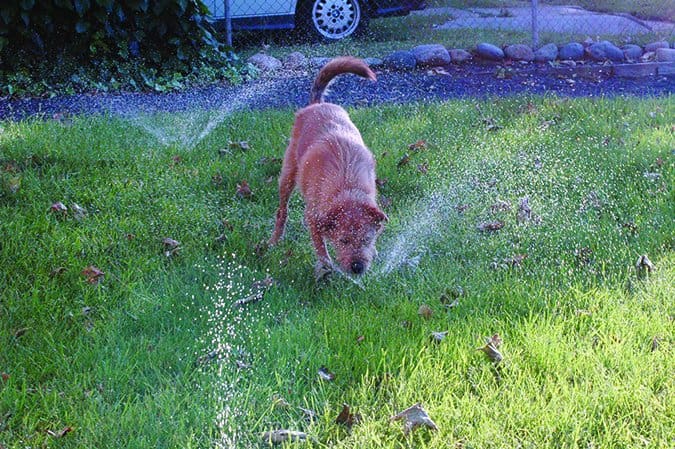
Know your dog. Being aware of how your individual dog interacts with water is key. Some dogs are very careful swimmers, keeping their noses pointed toward the sky and their mouths clamped shut. But others are more enthusiastic. Does yours like to splash in the pool, or bite at the stream of water from the hose or sprinkler? Then she’s likely at greater risk than another dog who is more reserved.
Discourage diving for toys.The key to avoiding water intoxication is curtailing any activity that can lead to water intake. Biting the water from a hose is also a no-no: Because that water exits under such high pressure, and it’s so fun (read, rewarding) your dog could ingest far more than is good for him.
Take frequent breaks. Regular time-outs on terra firma not only interrupt any ingestion of water, but also give a dog the opportunity to rid her body of extra fluids by urinating. Also, tired dogs tend to swim lower in the water, and may inadvertently take on more water than their better-rested counterparts.
Denise Flaim of Revodana Ridgebacks in Long Island, New York, shares her home with three Ridgebacks, 10-year-old triplets, and a very patient husband.



